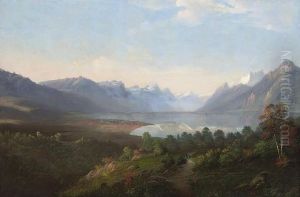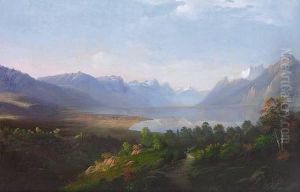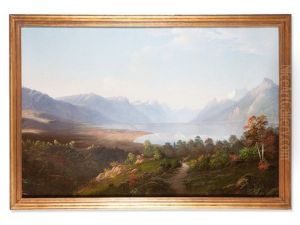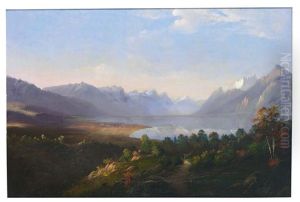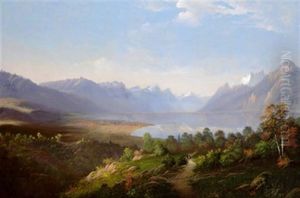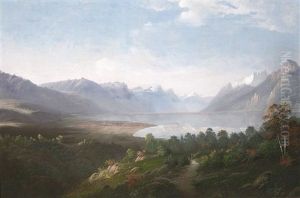Ludwig Eduard Boll Paintings
Ludwig Eduard Boll, although not a household name in the broad spectrum of art history, was a German painter and visual artist whose contributions to the world of art, especially in the 19th century, were notable for their time. Born in 1809, Boll embarked on his artistic journey in an era that was rich in cultural and artistic evolution. The 19th century was a period marked by significant transformations in the arts, with movements such as Romanticism, Realism, and the early stages of Impressionism reshaping artistic expressions and the public's perception of art. Boll's work, characterized by its attention to detail, vivid use of color, and the emotional depth of its subjects, reflects the broader artistic movements of his time while also displaying a unique personal style.
Throughout his career, Boll navigated the complex landscape of the 19th-century art world, contributing to the development of painting techniques and thematic exploration. His subjects often ranged from landscapes and portraits to scenes of daily life, each infused with a sense of realism and emotional resonance that spoke to the viewer on a personal level. Despite the lack of extensive documentation on his life and work compared to some of his contemporaries, Boll's paintings remain a testament to his skill and vision.
Boll's artistic legacy is one of dedication to the craft of painting and an ability to capture the essence of his subjects with both realism and sensitivity. Although he passed away in 1861, his work continues to be studied by art historians and appreciated by art lovers for its contribution to the 19th-century artistic milieu. The exact circumstances of his death and the extent of his oeuvre are not widely documented, which is often the case with artists who operated outside the most influential circles of their time. Nonetheless, Ludwig Eduard Boll's contribution to the art world remains valued for its portrayal of 19th-century life and its artistic merit.
